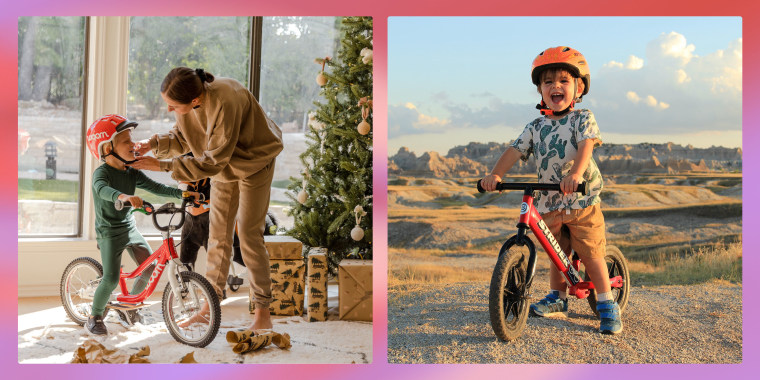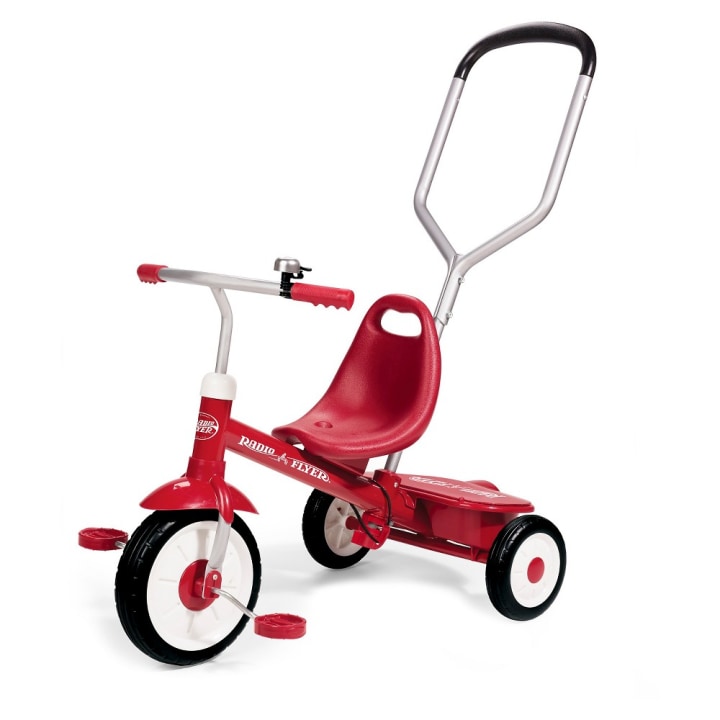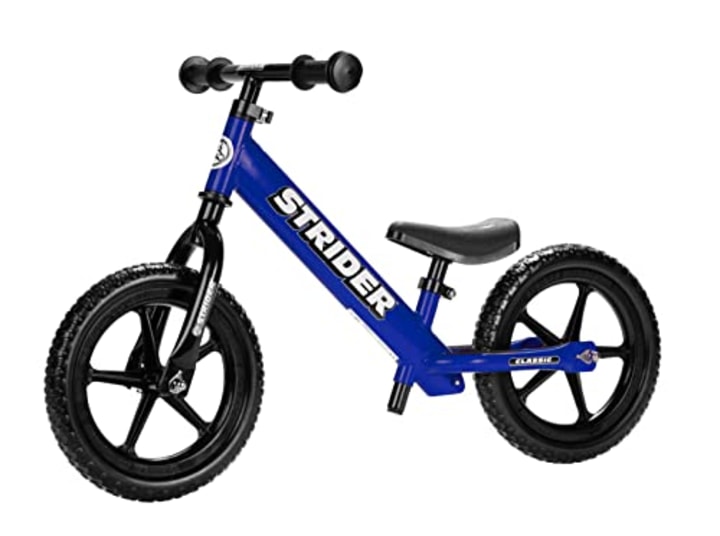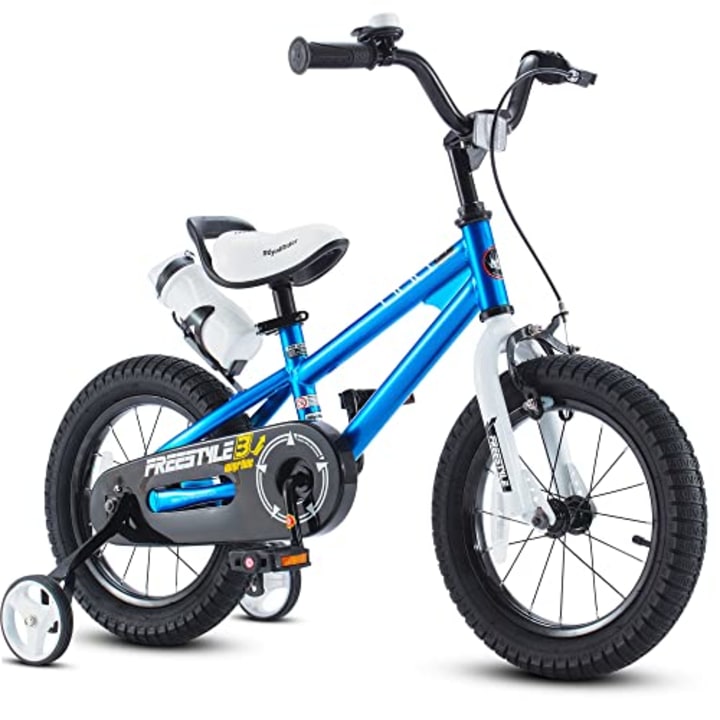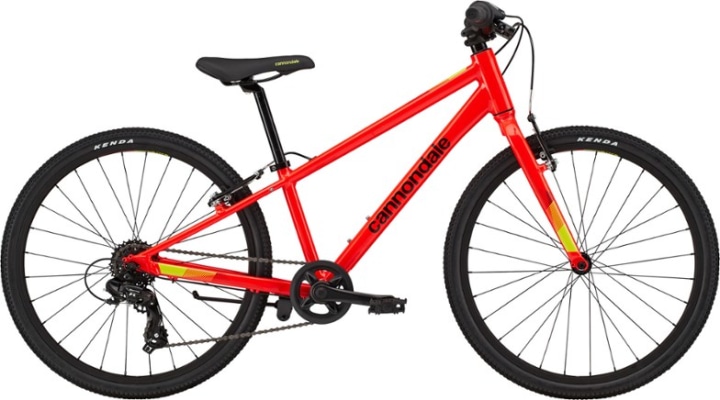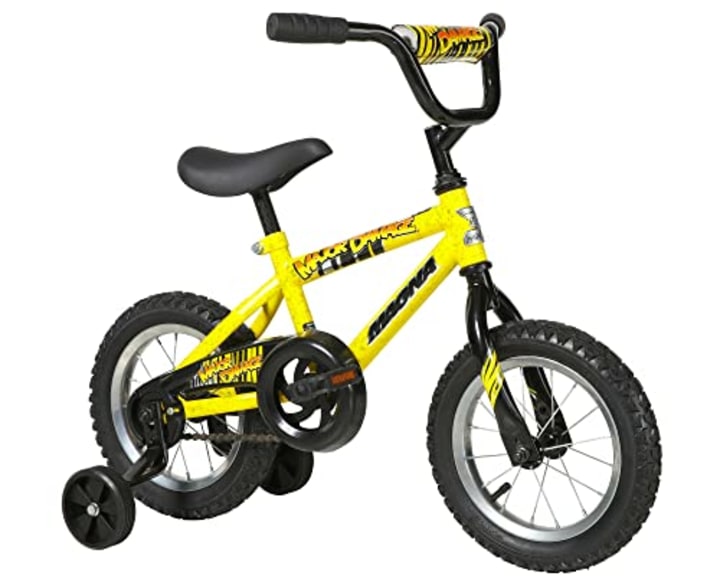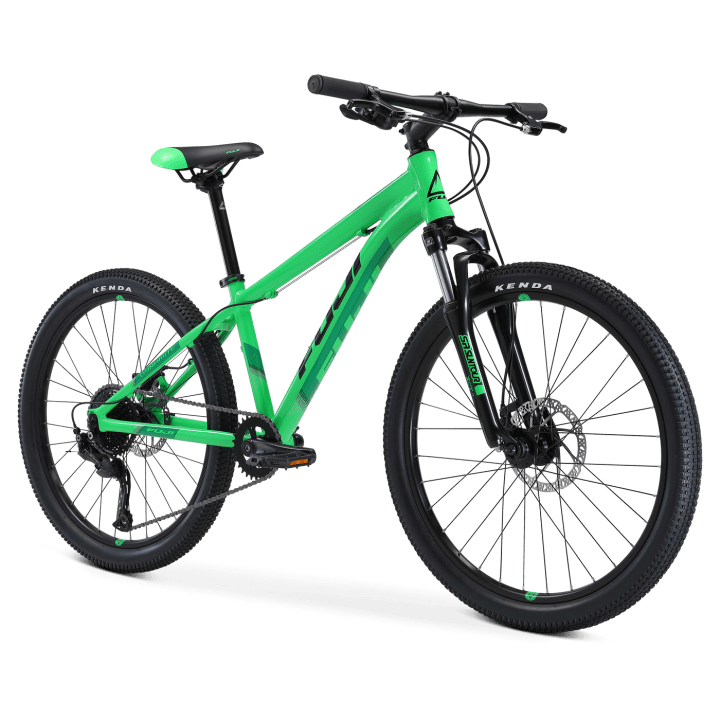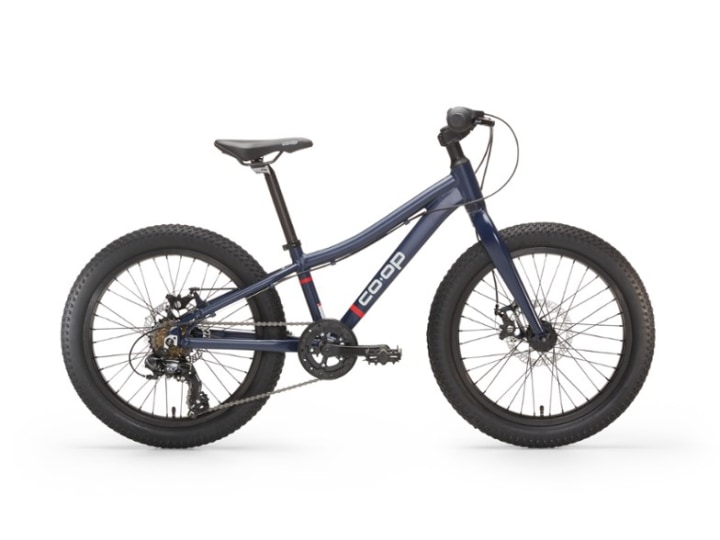Teaching your child to ride a bike is one thing, but helping them find the right bike can be an entirely other challenge. Whether your child is just learning how to catch their balance or simply itching to take a joy ride around the neighborhood, investing in a good quality bike that fits their age and height can be worthwhile — and since kids bikes are often sized differently from those for adults, there's a lot to consider when shopping for the right one.
SKIP AHEAD Kids bikes to consider | What are the different types of kids bikes?
To help you get started, we spoke to cycling experts about how to find the right bike for your child and what to consider when it comes to identifying the correct size, weight and type of bike. We also compiled a list of highly rated and expert-recommended options that are in line with their shopping guidance.
How to shop for a kids bike
When shopping for a kids bike, you want to make sure you’re getting a bike that will actually fit your child. Similar to adult bikes, the wheel size will indicate how big the frame is, explained Alison Dewey, education director with bicycling advocacy organization League of American Bicyclists. Typical wheel sizes for kids' bikes range between 12 and 24 inches, and the bigger (and often older) your child is, the bigger their bike’s wheels should be.
Another way to measure bike size is by your child’s inseam, which is the length from the floor to your child’s seat. Most bikes will offer multiple sizes, and bike maker Schwinn even offers estimates as to which size to buy, depending on your child’s age:
- 1 to 4 years old: 12-inch wheels
- 3 to 4 years old: 14-inch wheels
- 3 to 7 years old: 16-inch wheels
- 5 to 9 years old: 18-inch wheels
- 7 to 13 years old: 20-inch wheels
- 10 to 15 years old: 24-inch wheels
Of course, since children vary widely in sizes and body types, the numbers above will also likely vary. When determining the right size bike for your child, you should start by looking at the top tube — the bar at the top of the bike closest to the seat — and whether your child touches it when they’re in a normal standing position, according to Lor Song, education programs manager at the Bicycle Coalition of Greater Philadelphia.
“Make sure that when the child straddles over the bike in a normal pedestrian stance, the top tube doesn't hit their lower area — that's usually a good indication that the height is right for the child,” Song said. Dewey added that you also want there to be a little bit of space there, “so that it’s not a danger if they stop suddenly.”
Considering how quickly kids grow at younger ages, an adjustable seat post can help tailor the fit of the bike to your child and extend its usage. Dewey noted that the child’s toes should be touching the ground when they’re seated, but they shouldn’t be flat-footed since that indicates the seat is too low. She also warned that most bike manufacturers will include an etched line on the post that signifies a “danger zone” — if you raise the seat past that line, you run the risk of the seat snapping off or the frame breaking. Typically, you can raise the seat post about 4 to 5 inches before hitting that line.
Both Dewey and Song suggested paying attention to the weight of the bike, too. A bike that’s too heavy for your child will make it difficult for them to navigate and exhausting to ride long distances. Our experts recommended finding a bike with a frame weighing no more than 50% of your child’s weight, as lighter bikes are easier for them to maneuver. Safety is also worth mentioning: On top of considerations like traffic, other riders and the amount of time you’re riding, make sure your child is wearing a helmet and other protective gear.
Kids bikes to consider
To help your child have fun and stay safe while on the road, here are a few highly rated and expert-recommended bike options that are in line with guidance we received from our cycling experts. We listed different types of bikes for kids of varying ages and sizes based on our experts’ advice (we go into detail on the types of kids bikes below). We also noted the wheel size, suggested ages and weight of each one based on the bike manufacturers' recommendations.
Top tricycle for kids: Radio Flyer
Radio Flyer Steer and Stroll Trike
- Recommended ages: 2-5 years old
- Wheel size: 10-inch front wheels and 7-inch back wheels
- Bike weight: 14.6 pounds
A tricycle can be a great way to introduce your child to biking — this model is made of plastic and steel, and it comes with a handle on the back for parents to help their child steer (and avoid crashes). This tricycle comes with an adjustable seat, a storage compartment in the back and a petal lock in case you want to push your child via the handle. This tricycle weighs around 14 pounds and has a weight capacity of 49 pounds. It’s also highly rated, boasting a 4.7-star average rating from more than 6,200 reviews on Amazon.
Top balance bike for kids: Strider
Strider Classic Balance Bike
- Recommended ages: 2-3 years old
- Wheel size: 12 inches
- Bike weight: 6.7 pounds
Dewey recommended Strider’s balance bike as an ideal option for beginner riders, specifically for children aged 18 months to three years old. This model comes with thick tires for balance and has a weight capacity of up to 60 pounds, according to the brand. It also comes with an adjustable seat and handlebar height to help you fit it to your child, and it weighs under seven pounds, which makes it easy for your toddler to maneuver, according to the brand. It has a 4.8-star average rating from over 4,200 reviews on Amazon and comes in four different colors: blue, green, red and pink.
Top kids bike with training wheels: RoyalBaby
RoyalBaby Kids Bike with Training Wheels
- Recommended ages: 4-7 years old
- Wheel size: 16 inches
- Bike weight: 25 pounds
This bike is designed for kids who have outgrown a tricycle but aren’t quite ready to be on two wheels yet — this highly-rated model has built-in training wheels and comes mostly assembled, so your kid can be riding within minutes of opening the box. This bike comes in seven colors, including red, green, pink and orange. It’s available in a variety of size options, too, ranging from 12-inch wheels (with built-in training wheels) to 20-inch wheels (with no training wheels). This bike also boasts a 4.6-star average rating from over 16,000 reviews on Amazon.
Top lightweight bike for kids: Woom
Woom 4 20-Inch Kids Bike
- Recommended ages: 6-8 years old
- Wheel size: 20 inches
- Bike weight: 17 pounds
Made from lightweight aluminum, the Woom 4 bike weighs under 20 pounds, making this the lightest option on this list for kids above 6 years old. Woom says the bike’s seat is ergonomically designed for a more comfortable fit, and it features a highly adjustable seat post with a secure aluminum clamp that helps eliminate risk of the seat turning or twisting, according to the brand.
“The Woom bike is a good [option] because it's easy to assemble, provides hand breaks so kids can learn how to use them, has a bell and a bike pump,” Song said. The bike also has a 155-pound weight limit, comes with seven gears that can be manually adjusted using a twist shifter and includes ergonomic handlebars with screw-in grips to ensure comfort and safety, the brand says. It’s available in five colors, including red, blue, green, yellow and purple.
Top bike for older kids: Cannondale
Cannondale Quick Kids Bike
- Recommended ages: 10 years and older
- Wheel size: 24 inches
- Bike weight: 20 pounds
Song recommended Cannondale as a good high-end brand to consider that offers a variety of kids options. The Cannondale Quick bike has 24-inch wheels and seven gears, which can be great for older kids and more advanced riders. The brand says the frame is made of aluminum and is extremely lightweight, weighing in at only 20 pounds. This bike is designed less like a mountain bike and more like a road bike, with thinner tires and a lighter frame, according to Cannondale.
Top durable bike for kids: Dynacraft
Dynacraft Magna Major Damage BMX Dirt Bike
- Recommended ages: 4-8 years old
- Wheel size: 16 inches
- Bike weight: 24 pounds
This bike from Dynacraft was designed specifically for wear and tear, with a steel frame and colorful design. This model can hold up to 81 pounds, has 16-inch wheels (and removable training wheels) and weighs under 25 pounds, Dynacraft says. The bike — which earned a 4.5-star average rating from more than 2,700 reviews on Amazon — also has pedal breaks and a handlebar pad for more comfortable grip, according to the brand. This bike is also available in a 12-inch and 20-inch wheel size version.
Top high-end bike for kids: Fuji
Fuji Dynamite 24 Pro Disc
- Recommended ages: 8-11 years old
- Wheel size: 24 inches
- Bike weight: 29 pounds
The Dynamite 24 Pro Disc from Fuji Bikes — which Song called out as a good quality brand if you’re looking for a more generic bike — has a 24-inch wheel size, weighs under 30 pounds and is designed for young kids looking to explore trails, parks and other outdoor terrain, according to the brand. It features a durable and lightweight alloy frame and high-grip tires to handle dirt roads and off-road cycling, Fuji Bikes says.
Top mountain bike for kids: Co-op Cycles
Co-op Cycles REV 20 6-Speed Plus Kids Bike
- Recommended ages: 7-13 years old
- Wheel size: 20 inches
- Bike weight: 23 pounds
If you’re looking for a durable mountain bike for your child, this option from Co-op Cycles is designed with extra-wide, all-terrain tires for smooth and stable riding along trails, according to the brand. It has six gears to help customize their pedaling, which can be easily adjusted using a twist shifter, according to the brand. It has a weight limit of 80 pounds and has a 4.5-star average rating from more than 100 reviews at REI. Co-op Cycles also offers a 24-inch version of this mountain bike for older kids and teens.
What are the different types of kids bikes?
Dewey and Song noted there are several different types of kids bikes to consider depending on your child’s age and size. Toddlers and young children who are just learning to ride a bike will likely benefit from tricycles and balance bikes, while bigger kids who are more comfortable with balance and riding should lean more toward two-wheeled cruisers or mountain bikes.
The type of bike you get can also depend on a few different factors, including what type of riding the child is doing. “Kids that are going to be riding off-road trails can benefit from a BMX-style or mountain bike — if they’re riding on trails, you might consider getting a smaller bike that has bigger tires,” Song said. He added that different types of bikes can also fit different budgets: “Parents should consider how much they really want to spend since kids are still growing.”
Our experts listed the most common types of kids bikes to consider below, including tricycles, balance bikes and two-wheeled bikes.
- Tricycles are made for the youngest riders and are measured by wheel height and weight capacity.
- Balance bikes, also known as “push bikes,” are designed without pedals to help your child get accustomed to balancing on a bike and steering.
- Cruiser bikes are similar to typical two-wheeled commuter bikes for adults designed for low-intensity riding. Cruiser bikes for kids come with smaller frames and wheel sizes than those for adults, and most kids versions will come with coaster or foot brakes that stop when the rider pushes back on the pedals. If your child is new to biking, you can attach removable training wheels to help stabilize them. However, Dewey noted that training wheels don’t necessarily help your child become as comfortable with balancing on a bike as a balance bike would.
- Mountain bikes and BMX bikes are two-wheeled bikes that are usually crafted for bigger kids who are riding on rougher, off-road trails. These types of bikes are typically more expensive, prioritize durability and come with thicker wheels to handle uneven terrain.
When shopping around for a bike, Dewey and Song recommended going to a local bike shop rather than a big-box retailer if you can. “Bike shops have better quality bikes that are going to be assembled better, and they have staff that can help with the fit of the bike,” Dewey said. She added that a lot of bike shops will also allow you to trade in a bike and go up a size at a lower cost or at the same price point as the bike, which can be beneficial for kids who are growing quickly.
Meet our experts
At Select, we work with experts who have specialized knowledge and authority based on relevant training and/or experience. We also take steps to ensure that all expert advice and recommendations are made independently and with no undisclosed financial conflicts of interest.
- Alison Dewey is the education director with bicycling advocacy organization League of American Bicyclists. She leads the League's Smart Cycling program and the annual National Bike Summit.
- Lor Song, also known as Lao, is the education programs manager at the Bicycle Coalition of Greater Philadelphia who educates local communities about cycling safety, sustainability and healthier lifestyles.
Catch up on Select's in-depth coverage of personal finance, tech and tools, wellness and more, and follow us on Facebook, Instagram and Twitter to stay up to date.
